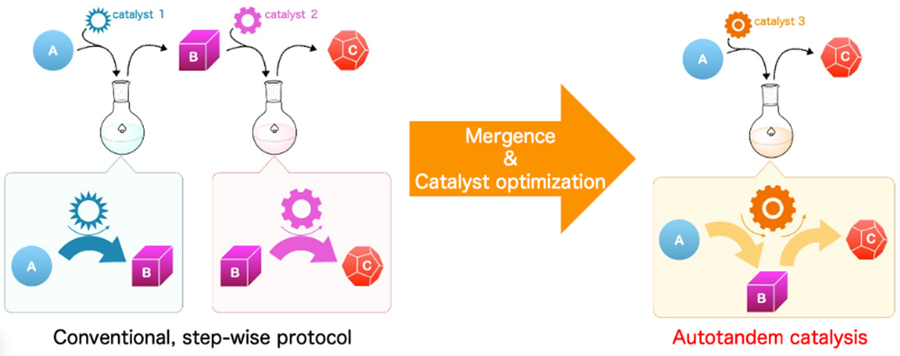Gold catalyst is a “two-way” player who realizes an easy access to the key structures of medicines
A group in laboratory of synthetic and medicinal chemistry (associate professor Kenji Sugimoto, and professor Yuji Matsuya) in Faculty of Pharmaceutical Sciences reported a novel synthesis of pyrazolines and dihydropyridines, which are known as important pharmaceutical cores, catalyzed by Au(I) complex. Notably, a single gold catalyst enables the mechanistically distinguished two transformations in the reaction vessel (“two-way” player) to construct densely substituted nitrogen heterocycles from readily available starting materials.
One-pot processes involving several transformations are believed to be efficient and ideal to build up the complex molecules including pharmaceuticals. Among them, autotandem catalysis, which realizes mechanistically distinguished multiple transformations by a single catalyst, is recognized as a highly efficient and advanced chemical tool. On the other hand, there still remains a large difficulty on the chemoselective activation of several reactants in the proper order.

The research group successfully uncovered a novel autotandem catalysis leading to pyrazolines and dihydropyridines via sequential aza-enyne metathesis/6p-electrocyclization. The reaction products could be easily switched by changing the substituents on the nitrogen atom of the substrate imines.
Carbazates could be converted into pyrazolines by aza-enyne metathesis with propiolates and subsequent addition–6p-electrocyclization of a,b-unsaturated hydrazones.
Dihydropyridines could be obtained from arylimines through the similar aza-enyne metathesis followed by addition–6p-electrocyclization of 1-azahexatrienes.

